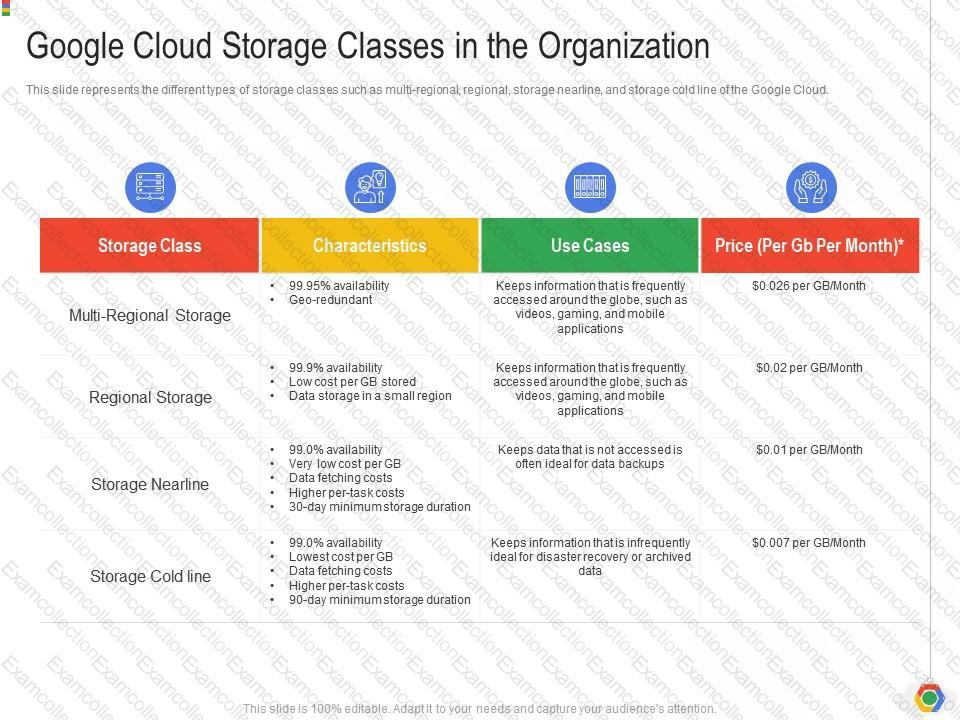Google Associate-Cloud-Engineer - Google Cloud Certified - Associate Cloud Engineer
Total 343 questions
You are building an archival solution for your data warehouse and have selected Cloud Storage to archive your data. Your users need to be able to access this archived data once a quarter for some regulatory requirements. You want to select a cost-efficient option. Which storage option should you use?
You created a cluster.YAML file containing
resources:
name: cluster
type: container.v1.cluster
properties:
zone: europe-west1-b
cluster:
description: My GCP ACE cluster
initialNodeCount: 2
You want to use Cloud Deployment Manager to create this cluster in GKE. What should you do?
You want to permanently delete a Pub/Sub topic managed by Config Connector in your Google Cloud project. What should you do?
You need to manage multiple Google Cloud Platform (GCP) projects in the fewest steps possible. You want to configure the Google Cloud SDK command line interface (CLI) so that you can easily manage multiple GCP projects. What should you?
Your company is seeking a scalable solution to retain and explore application logs hosted on Compute Engine. You must be able to analyze your logs with SQL queries, and you want to be able to create charts to identify patterns and trends in your logs over time. You want to follow Google-recommended practices and minimize your operational costs. What should you do?
Your company has a Google Cloud Platform project that uses BigQuery for data warehousing. Your data science team changes frequently and has few members. You need to allow members of this team to perform queries. You want to follow Google-recommended practices. What should you do?
You have sensitive data stored in three Cloud Storage buckets and have enabled data access logging. You want to verify activities for a particular user for these buckets, using the fewest possible steps. You need to verify the addition of metadata labels and which files have been viewed from those buckets. What should you do?
You are performing a monthly security check of your Google Cloud environment and want to know who has access to view data stored in your Google Cloud
Project. What should you do?
You have an application that receives SSL-encrypted TCP traffic on port 443. Clients for this application are located all over the world. You want to minimize latency for the clients. Which load balancing option should you use?
You are implementing a company-wide standard to control SSH access for your Google Cloud projects. You want to simplify SSH access management to your Compute Engine Instances while maintaining audit compliance and eliminating as many manual steps as possible. What should you do?




